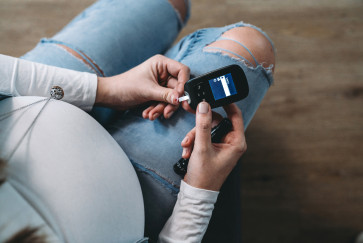Despite clinical trials showing that FDA-approved antiviral therapies Paxlovid and Molnupiravir reduce risk of death by as much as 89%, very few infected individuals have used the potentially life-saving treatment. As a result, the COVID-19 virus is currently the third leading cause of death in the U.S.
A national poll found that among individuals who reported they had been infected with COVID-19 between May and early July, only 11% were prescribed an antiviral therapy. The low uptake rate represents a missed opportunity to save a significant number of the 200,000 lives lost to COVID-19 since the FDA announcement on Dec. 22, 2021, that antivirals were widely available in pharmacies.
The study was conducted by the COVID States Project, a consortium of universities comprised of Northwestern, Harvard, Northeastern and Rutgers. The researchers sought to find out how antivirals are currently being used to treat COVID-19.
“The lack of use likely reflects poor knowledge about availability and also general fatigue – that also has left boosters notably low,” said political scientist James Druckman.
Druckman is the Payson S. Wild Professor of Political Science in the Weinberg College of Arts and Sciences and associate director of the Institute for Policy Research at Northwestern.
One of the challenges of using Paxlovid is that the therapy needs to be used within five days of the first symptoms occurring to be effective. During this critical time window, patients must confirm their infection with a physician and locate a pharmacy with the antiviral in stock, often before the full severity of symptoms is known.
Among the 24,142 poll respondents, 43% (10,423) reported they had been infected with COVID-19 since Jan. 1. When asked whether they had been treated with an antiviral medicine taken by mouth, only 11% indicated they had been prescribed an antiviral.
Adults over 65 had a relatively higher rate of taking antivirals at 20%. Other groups taking antivirals at a higher rate included men (13% of men versus 9% of women), and individuals with higher incomes (16% of those with earnings $100,000 or more versus 7% of those earning less than $25,000).
According to the researchers, more can be done to help people take advantage of these life-saving therapies.
“It would be very helpful if medical practitioners and providers made a more concerted effort to inform patients about antivirals and clarify the benefits — and the relative convenience of obtaining them,” Druckman said.
The poll surveyed 24,414 individuals across all 50 states between June 8 and July 6, 2022. Participants were sampled using state-level representative quotas. Data were then weighted by demographics to match the U.S. population, including race/ethnicity, gender, age, income, education and rural/urban/suburban.
Previous COVID States Project survey results can be found here.


